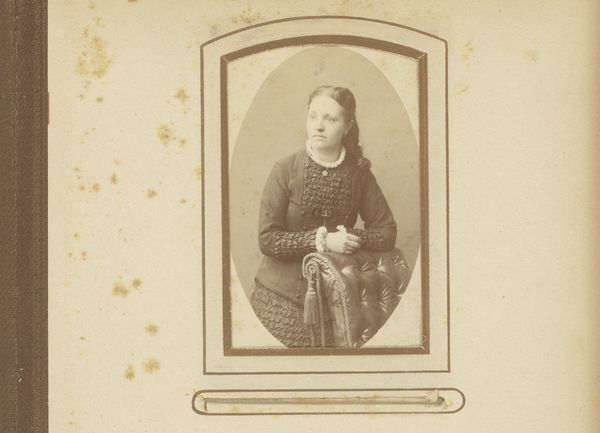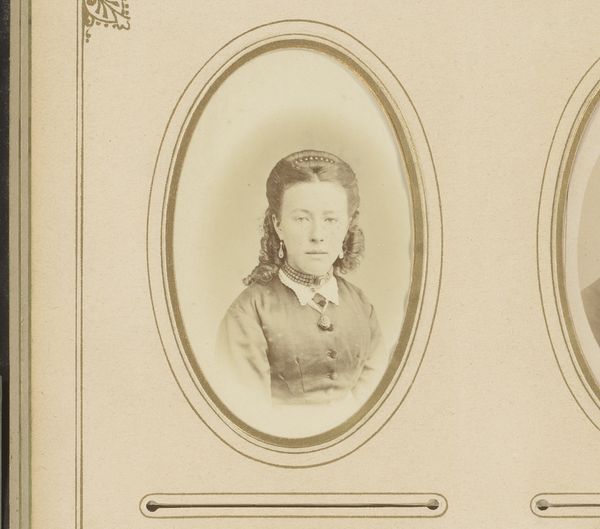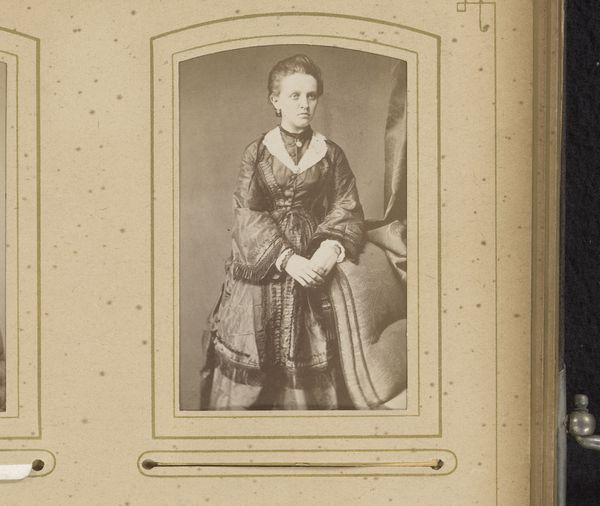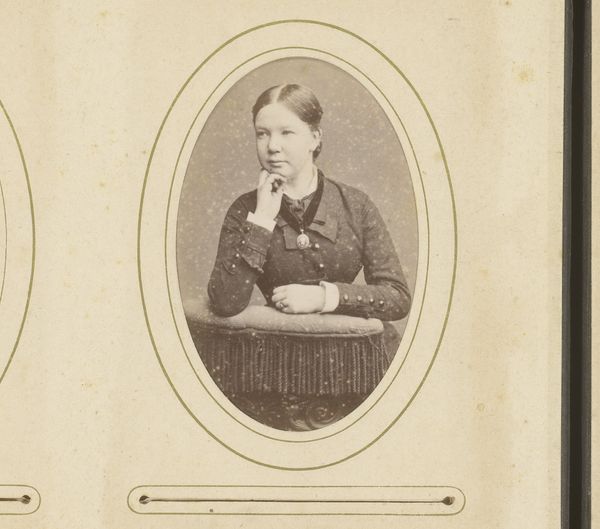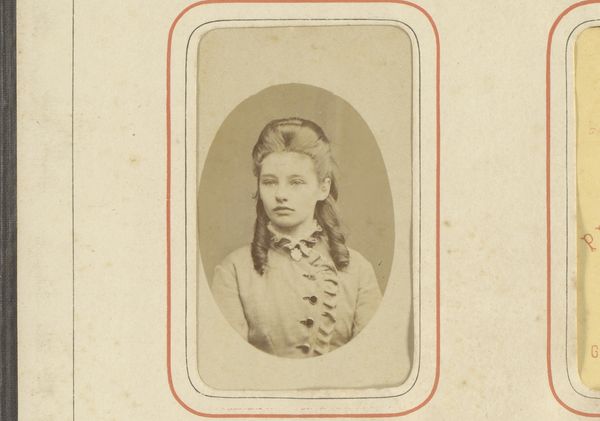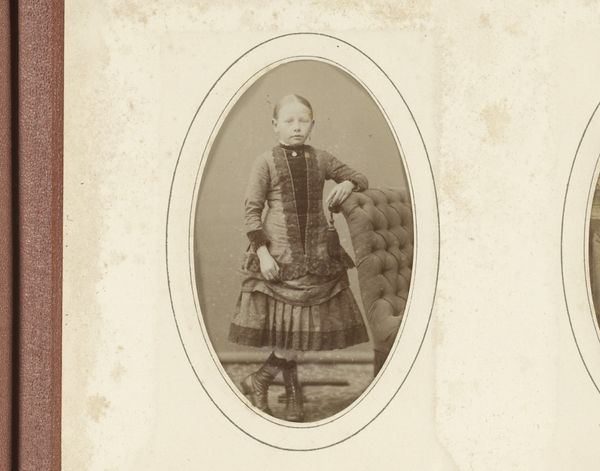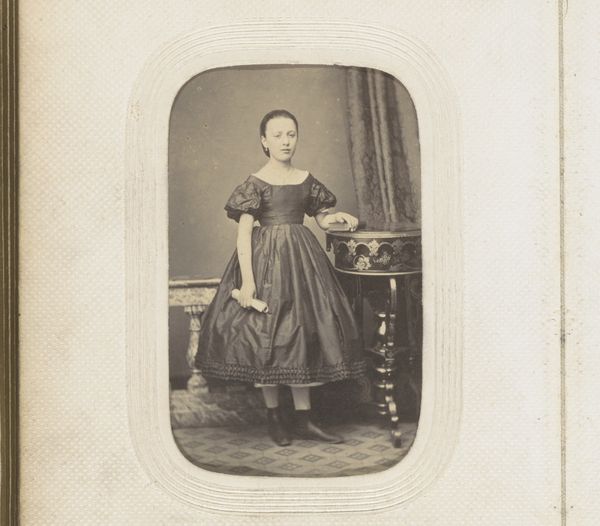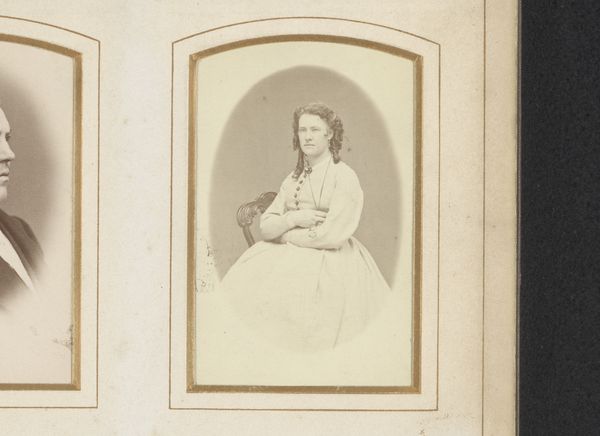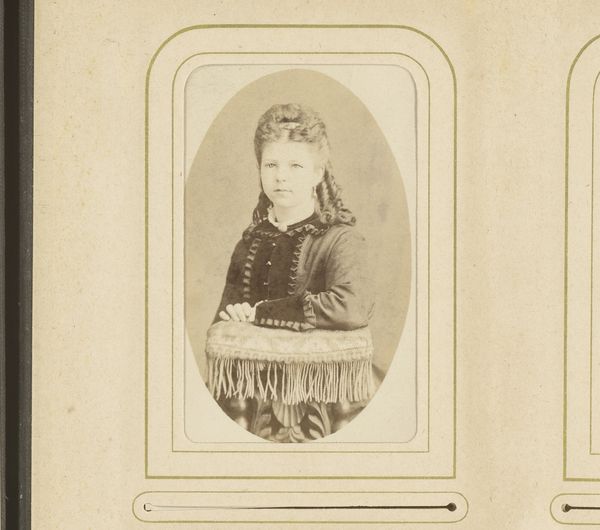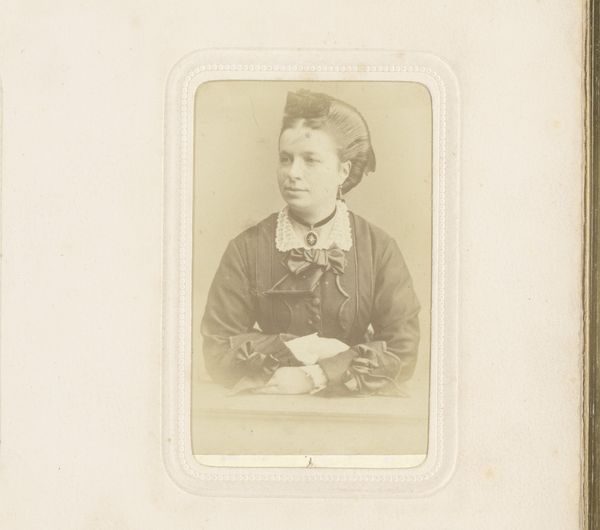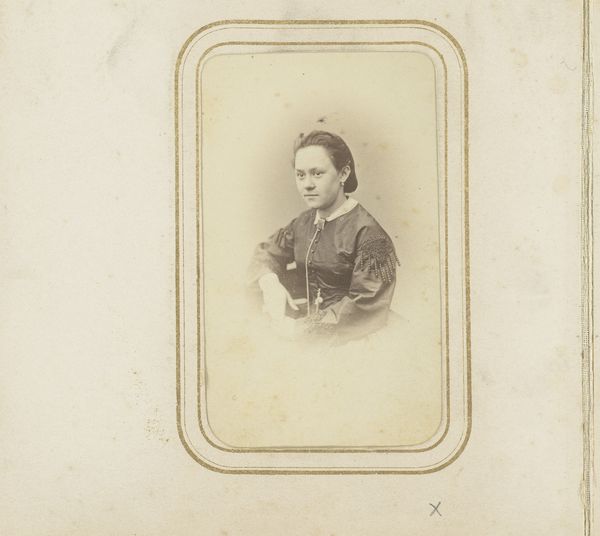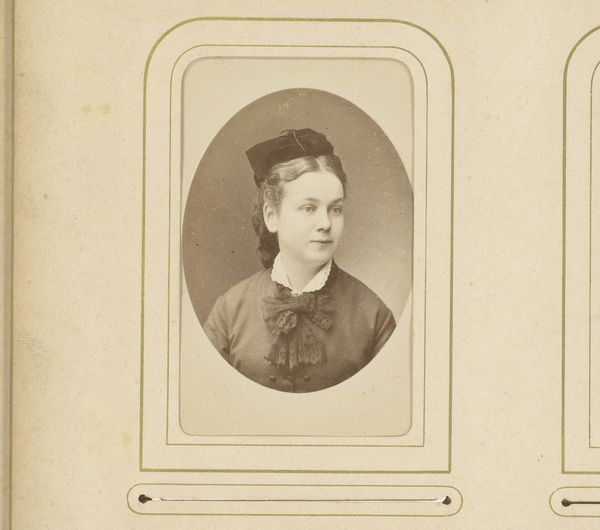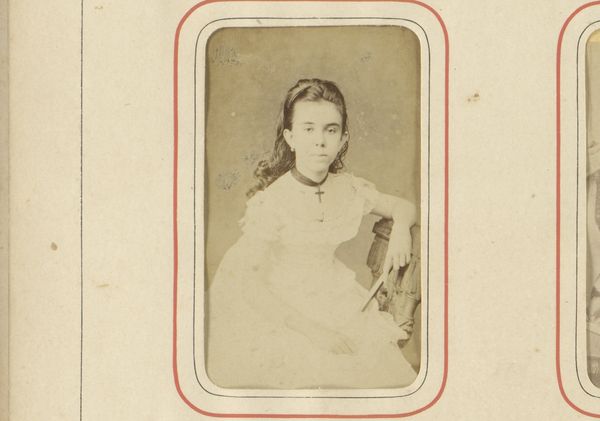
photography, gelatin-silver-print
#
portrait
#
16_19th-century
#
photography
#
historical photography
#
gelatin-silver-print
#
academic-art
#
realism
Dimensions: height 103 mm, width 64 mm
Copyright: Rijks Museum: Open Domain
Curator: I find this portrait so compelling; the gelatin-silver print really captures a moment in time. It’s attributed to Vlaanderen & van der Aa and is titled "Portret van een onbekend meisje", dating from around 1874 to 1883. Editor: It's so muted! Almost ghostly. The girl’s stiff posture suggests the photographic process was still quite an event. You can almost feel the weight of expectation in her gaze, but I am most attracted to her dress’s intricate detailing that almost feels sculptural. Curator: Precisely! The detail achievable through the gelatin-silver process, combined with the fashions of the time—all those bows and ruffles! It really brings home the degree to which photography was competing with painting, attempting to capture the same textures and nuances of reality, not just a likeness. Editor: I agree. These portraits fulfilled a specific need. Who was commissioning these and why? There must have been some anxiety of the upper-middle classes to immortalise them during the time when it was still reserved. Curator: Good question! I suspect the commissioning of portraits like this also speaks to rising bourgeois aspirations. Photography offered access to portraiture in a way that oil painting, for example, simply could not. The process would require specialised spaces, and so democratising what art looked like and how and where people were displayed, by accessing this photographic style. Editor: So it wasn't just about preserving appearances; it was about solidifying a social standing? Creating an image that resonated with contemporary societal norms and values? Curator: In a way, yes, with social dynamics very much being reshaped during industrial capitalism, such portraits reflect and solidify their place within society. Photography could make people see their own power in ways that were never before able. Editor: Understanding that changes my appreciation of the material object itself. It transforms from being merely a "ghostly image" to evidence of societal ambitions. It really provides us with such insight into the subject matter. Curator: Exactly. Seeing photography’s influence makes the object more than just an attractive gelatin-silver print. Its social role provides us with context from within.
Comments
No comments
Be the first to comment and join the conversation on the ultimate creative platform.
